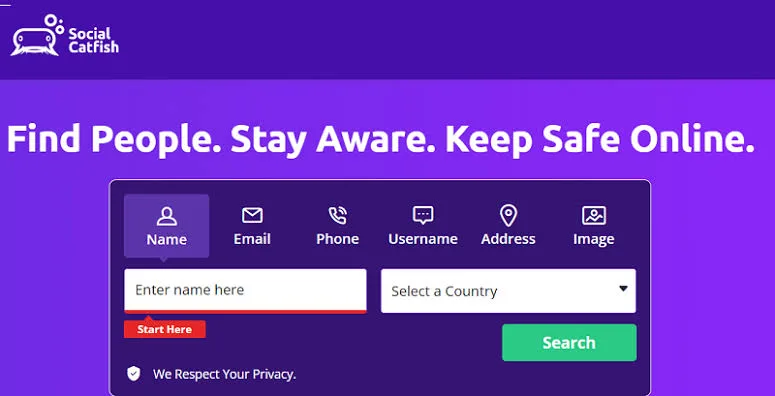Life can sometimes feel like one big reality show, and when doubts swirl about a partner’s loyalty, it’s tempting to reach for a digital sleuth. Enter Cheaterbuster, a service that claims to scan Tinder and other apps to expose hidden profiles. But does it truly deliver? In this deep dive, we’ll explore how Cheaterbuster operates, what user reports reveal, and the risks it carries.
Does Cheaterbuster Truly Work?
Cheaterbuster works sometimes, when you input precise data, have clear photos, and realistic expectations. But it fails as often as it succeeds, especially with vague information or common names. It’s a tool, not a miracle.
It can provide clues but not conclusions, reassurance but not resolution. For some, it’s a shortcut to the truth; for others, a costly source of confusion. If you use it, do so with eyes open, not just on your partner, but on your own peace of mind.
How Cheaterbuster Claims to Reveal Hidden Profiles?
Cheaterbuster presents itself as a high-tech solution: you input a name, age, location, and optionally upload photos. The system then “scans” Tinder’s database to match profiles, generating a dossier that includes images, bio, last active time, social links, and signup age. The site boasts “97–99 percent accuracy” and promises real-time tracking and facial recognition. Its pitch is bold: clarity with minimal work on your part.

In practice, there are several caveats:
- The matching depends heavily on image quality and uniqueness.
- Common names or generic photos may return many false or vague matches.
- Some features remain locked behind additional paywalls.
- The system’s access to Tinder’s internal data is never verified publicly.
The contrast between polished marketing and opaque operations raises questions. If the system truly taps into Tinder’s internal files, that would mean serious privacy violations. If not, then the match reports come from external, publicly indexed data, and that’s far less reliable.
Split Reviews: Praise, Complaints, and Mixed Signals
User feedback about Cheaterbuster is deeply split. Some people swear by it, describing how it “uncovered a secret profile just when everything was falling apart.” They praise the speed and clarity it brought to an emotionally messy situation. One wrote: “Within minutes, it scanned and identified whether someone had an active dating profile.”
On the flip side, many users feel burned. Complaints include:
- Paying for nothing, reports remain blank or vague.
- Hidden recurring charges that continue after cancellation.
- Blurred or partial matches require extra payments.
- No clear way to cancel or request refunds.
- Accusations on forums labeling it a “scam” or recommending alternatives.
This division suggests Cheaterbuster may work well only under ideal conditions, but in many real cases, results can feel underwhelming or exploitative.
Real Cases: When the Tool Helped and When It Failed
Stories from users highlight both relief and regret. In one case, a user tried a face-based search and initially saw blurred results. To view full matches, she had to pay yet again. She switched over to a competitor, Cheateye, which gave cleaner facial matches and more transparent pricing. She concluded that Cheaterbuster “might work in some cases,” but in her own situation, rivals performed better.
Another user claimed the service exposed a secondary profile that aligned with her suspicions, but even then, the proof was sketchy (images were low resolution, location data was vague). While it offered emotional validation, it didn’t settle the bigger questions. In yet another account, a user reported recurring charges long after unsubscribing, stating customer support was unresponsive.
These real stories show that Cheaterbuster is not consistently reliable. At best, it may serve as a tool in rare cases where names and images are distinctive. At worst, it can drain money and stir anxiety without anything conclusive.
How Input Quality Strongly Affects Outcomes?
Your results with Cheaterbuster depend heavily on the quality of what you submit. If your input is great, you might get something usable. If it’s mediocre, your results could be garbage.
Factors that help the tool perform better:
- Crisp, high-resolution photos.
- Uncommon or unique first and last names.
- Knowledge of approximate location.
- Some verifiable data like age, previous social handles.
- Minimal ambiguity (no multiple people sharing similar info).
When inputs are weak, you risk:
- False matches (mistaking someone else for your partner).
- No matches at all.
- Blurred or incomplete data locked behind another payment.
Because so much hinges on what you feed the system, many users feel cheated when they don’t get decisive results, even though the fault lies less with their partner and more with the tool’s dependency on perfect inputs.
Privacy Risks: What You’re Potentially Exposing
Providing Cheaterbuster with names, photographs, and even payment details doesn’t come without stakes. Their privacy policy is vague. You must ask: where do your uploads go? Are they stored indefinitely? Shared or sold? The lack of clear statements is alarming.
Worst-case scenarios include:
- Data breach exposure.
- Your partner’s name or image is leaking to unknown third parties.
- The tool uses your data later for training or resale.
- Misuse of your personal data in identity tracking.
Emotional vulnerability compounds the risk. If you’re already distressed, handing over intimate or identifying information to a site with unclear safeguards can backfire. Even if Cheaterbuster “works,” the hidden price may be your data security, and that can lead to guilt or regret.
Emotional Aftermath: What Happens After You Get the Results
Discovering the truth, whether through Cheaterbuster or another method, can bring a wave of mixed emotions. Relief, anger, sadness, and even guilt can appear all at once. People often expect closure but find themselves with more questions than answers. That’s because digital evidence, especially from apps like Tinder, is rarely absolute proof of betrayal.
Key emotional patterns that often follow:
- Relief when suspicions are confirmed and uncertainty ends.
- Shock at realizing a loved one may have been dishonest.
- Denial if the results seem incomplete or inconclusive.
- Anger at both the partner and the platform that made discovery possible.
- Exhaustion from obsessing over data rather than feelings.
For emotional health, experts suggest taking a step back before confronting a partner. Screenshots and data don’t always tell the whole story, apps glitch, profiles get cloned, and mistakes happen. Talking to a counselor or a trusted friend can help you process the findings with clarity instead of impulse.
Cheaterbuster’s Cost and Value Proposition:
Cheaterbuster charges roughly $17–$18 per search, with bundled discounts for multiple searches. However, the value you receive varies dramatically. Many users argue that paying nearly $20 for a single, uncertain report feels excessive, especially when accuracy isn’t guaranteed.
Points to weigh before purchasing:
- Transparency: No free trial or preview of the data you’ll get.
- No Refunds: Once paid, there’s no way to reclaim your money, even if the report is blank.
- Hidden Upsells: Some results prompt extra payment for full visibility.
- Competitors Offer More: Tools like Cheateye and SocialCatfish provide similar scans with more transparency.
So, does the price justify the service? Only if your need for reassurance outweighs the financial risk. Otherwise, consider alternatives that verify social media or dating activity in a more transparent, ethical way.
Legality and Ethical Dilemmas Surrounding Cheaterbuster:
Even though Cheaterbuster uses publicly available data, its methods walk a fine line. Tinder’s terms of service prohibit scraping or automated searches. This means any tool claiming to “scan Tinder” may technically breach those policies. Users aren’t likely to face legal trouble themselves, but they are indirectly supporting gray-zone data scraping.
Ethically, the question is more complex. Searching for a partner’s online activity without their consent can:
- Breach privacy and trust.
- Escalate insecurity in relationships.
- Lead to false accusations based on incomplete evidence.
- Create a cycle of surveillance rather than communication.
Before using such tools, it’s worth reflecting on whether the act aligns with your values. Transparency and conversation often yield more lasting peace than covert investigation.
Alternatives to Cheaterbuster That Offer Clarity:
If you’re still determined to find digital traces, there are safer, sometimes more affordable ways to do it.
Some commonly suggested alternatives include:
- Cheateye: Offers facial recognition and transparent payment with clear previews.
- SocialCatfish: Uses public databases to find social profiles across multiple apps.

- SwindlerBuster: Focuses on romance scam detection rather than pure infidelity.
- Reverse Image Search: Google or TinEye can help verify if profile photos are used elsewhere.
- Open Communication: Having an honest talk with your partner is often the most revealing method.
Each option comes with pros and cons, but most users find that mixing practical tools with emotional maturity yields the most honest outcomes.
The Role of Trust and Communication:
No digital service can replace genuine communication. Trust, once shaken, rarely rebuilds through technology alone. Whether you confirm or dismiss suspicions, it’s essential to reestablish emotional balance through dialogue, boundaries, and counseling if needed.
Healthy ways to rebuild trust include:
- Open conversations without accusation or defensiveness.
- Mutual agreements about online behavior and privacy.
- Therapeutic guidance to manage recurring suspicion or trauma.
- Time and patience, healing doesn’t happen overnight.
Cheaterbuster might uncover evidence, but only mutual honesty can rebuild confidence.
The Bigger Picture: Technology and Relationships
We now live in an era where every click and swipe can feel like evidence. Apps like Cheaterbuster reflect a wider cultural shift in relationships increasingly mediated by data rather than conversation. While technology can empower discovery, it also risks amplifying mistrust.
Sociologists suggest balancing curiosity with compassion. Technology should serve clarity, not paranoia. Instead of focusing solely on exposure, couples can use digital literacy as a tool for transparency, checking permissions, sharing expectations, and understanding privacy boundaries.
Conclusion:
Cheaterbuster’s promise of clarity comes wrapped in uncertainty. It may reveal Tinder profiles, but it can’t decode human behavior. Before paying, consider the emotional, financial, and ethical costs. Real trust doesn’t come from algorithms; it comes from communication, honesty, and empathy.
If you’re feeling drained by suspicion, maybe it’s time to pause the search and focus on healing instead. Because sometimes, the most important discovery isn’t about whether your partner has a profile, it’s about rediscovering your own sense of peace.
FAQs:
Accuracy depends on the quality of input data. Clear photos and unique names improve results, but it’s never fully reliable.
No, all purchases are final. Even if the search yields no matches, you can’t request a refund.
It collects personal and payment data, but its privacy policy lacks full transparency. Use caution when uploading sensitive information.
Yes, but doing so can raise ethical concerns. It’s better to address doubts directly through conversation.
Cheateye, SocialCatfish, and reverse image searches are often more transparent and effective tools for verifying online profiles.

